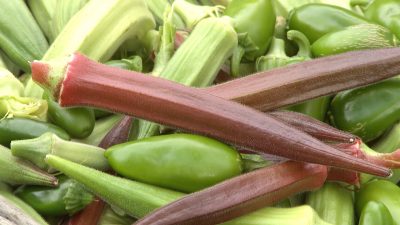Can I use bagged mulch that’s gotten a little moldy after sitting around?
Thanks to Maritza for this great question and picture! Like all of us (huh!), she has a couple of bags of cedar mulch that have been stored outside since last year, and now there’s mold growing in the bag. Is the mulch safe to use in a garden bed?
Just separate out the moldy portion and toss it in your compost pile, and the rest is safe to use. The moist environment in the bag with all that yummy, dead organic matter is the perfect place for mold and other fungal spores to take root. You don’t want to use the moldy mulch in your garden, simply because it would serve as a source of spores for the colony to spread.
But the mold is feeding on dead tissue, not living, so unless the bed was kept far too wet, the mold wouldn’t damage your plants. In fact, there are dormant mold spores just about everywhere, just waiting for the situation to be right, so they can germinate and grow. But take away the environmental problems, such as too much moisture, and the colony will quickly die out.
Soil is actually teeming with many different species of microbes, most of which pose no threat to normal plant life, and even help improve it by breaking down dead organic matter and converting it to life-giving nutrients. So when you toss the moldy mulch into your compost pile, other microbes get involved in the process and continue the job of breaking those wood chips down into smaller and smaller pieces, until you have rich, humic compost to add back to your soil.
If you find that the mold is wide-spread throughout the bag of mulch, or if you just want to err on the side of caution, you could simply empty the whole bag into your compost pile, and let nature run its course.

 Lynne Dobson
Lynne Dobson Jon Hutson
Jon Hutson Shade Plant List by Jon Hutson Tillery Street Plant Company
Shade Plant List by Jon Hutson Tillery Street Plant Company Daphne Richards
Daphne Richards
 Trisha Shirey
Trisha Shirey